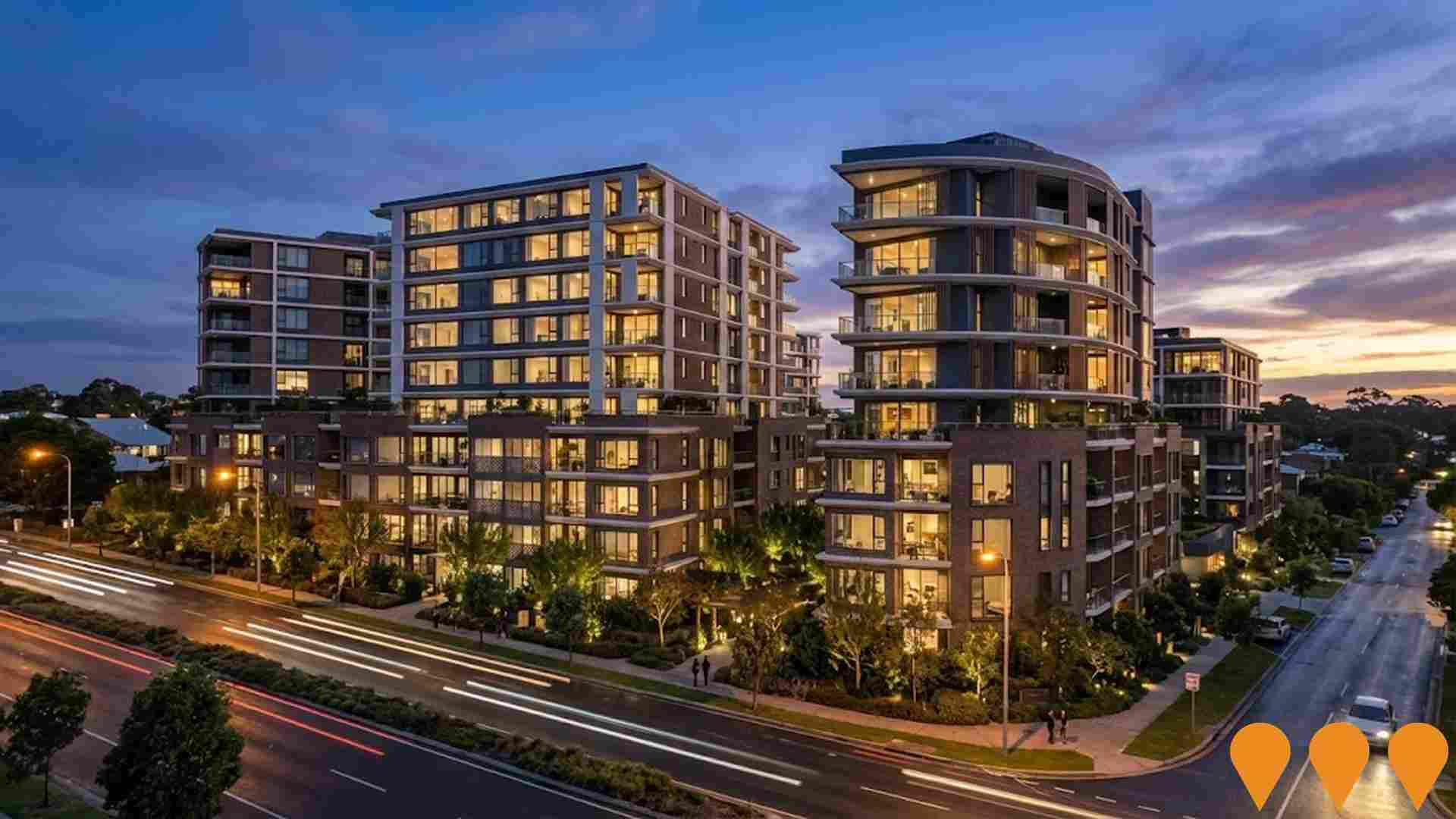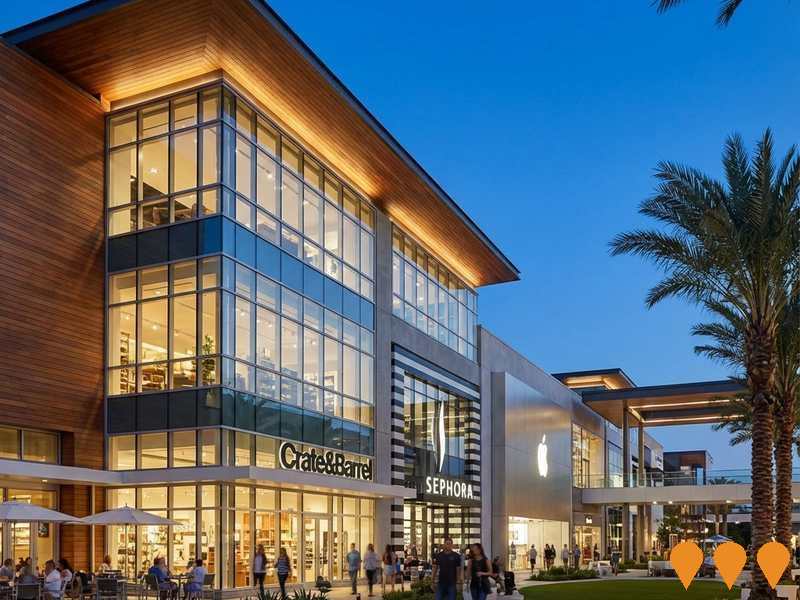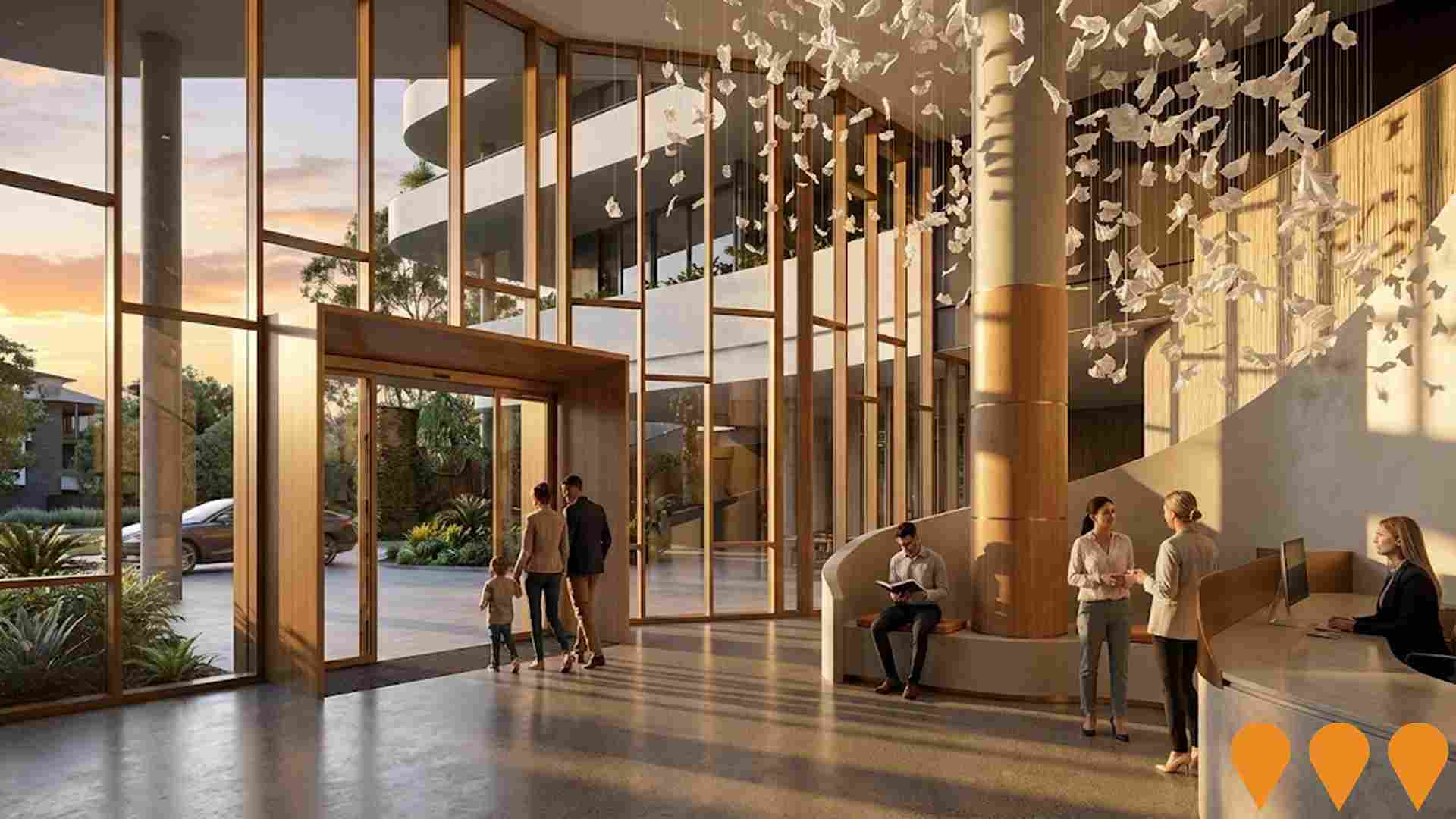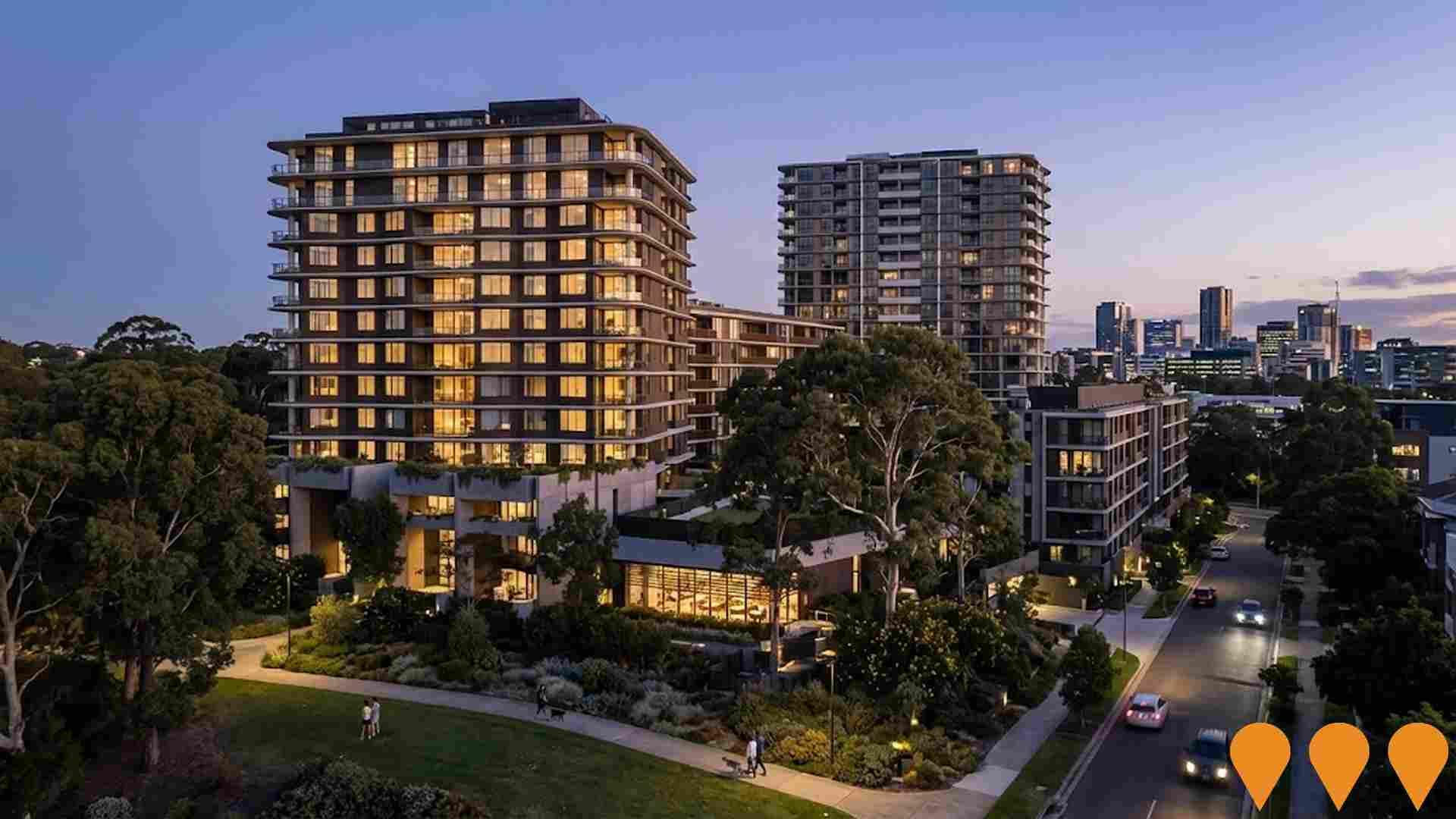Chart Color Schemes
est. as @ -- *
ABS ERP | -- people | --
2021 Census | -- people
Sales Activity
Curious about local property values? Filter the chart to assess the volume and appreciation (including resales) trends and regional comparisons, or scroll to the map below view this information at an individual property level.
Find a Recent Sale
Sales Detail
Population
Castle Hill - West has shown very soft population growth performance across periods assessed by AreaSearch
Castle Hill - West's population is 5,192 as of August 2025, reflecting an increase of 9 people since the 2021 Census which reported a population of 5,183. This change is inferred from ABS estimated resident population of 5,192 in June 2024 and 3 validated new addresses since the Census date. The population density ratio is 3,165 persons per square kilometer, placing it in the upper quartile relative to national locations assessed by AreaSearch. Overseas migration contributed approximately 77.1% of overall population gains during recent periods. AreaSearch adopts ABS/Geoscience Australia projections for each SA2 area released in 2024 with a base year of 2022, and NSW State Government's SA2 level projections released in 2022 with a base year of 2021 for areas not covered by this data.
Growth rates by age group are applied to all areas from 2032 to 2041. Projections indicate an overall population decline, with the area's population expected to contract by 113 persons by 2041. However, specific age cohorts are anticipated to grow, notably the 75 to 84 age group which is projected to expand by 287 people.
Frequently Asked Questions - Population
Development
The level of residential development activity in Castle Hill - West is very low in comparison to the average area assessed nationally by AreaSearch
Castle Hill - West has averaged approximately two new dwelling approvals annually over the past five financial years, totalling 12 homes. As of FY-26, zero approvals have been recorded to date. During this period, population has decreased, suggesting that new supply has kept pace with demand, providing good options for buyers. The average expected construction cost value of new homes is $876,000, indicating a focus on the premium segment with upmarket properties.
This financial year, $162,000 in commercial development approvals have been recorded, predominantly reflecting residential focus. Compared to Greater Sydney, Castle Hill - West has significantly less development activity, which typically strengthens demand and prices for existing properties. However, recent periods have seen an increase in development activity. Nationally, development activity is higher than in Castle Hill - West, suggesting market maturity and possible development constraints. Recent development has exclusively comprised detached dwellings, maintaining the area's traditional suburban character with a focus on family homes appealing to those seeking space.
With approximately 1168 people per approval, Castle Hill - West indicates a mature, established area. Population projections show stability or decline, suggesting reduced housing demand pressures in the future, benefiting potential buyers.
Frequently Asked Questions - Development
Infrastructure
Castle Hill - West has very high levels of nearby infrastructure activity, ranking in the top 20% nationally
Changes to local infrastructure significantly influence an area's performance. AreaSearch identified 11 projects likely impacting the area. Notable projects include Castle Hill North Precinct Plan, Hills Showground Station Precinct, Dawes Avenue Residential Development, and Bella Vista Gardens. The following list details those most relevant:.
Professional plan users can use the search below to filter and access additional projects.
INFRASTRUCTURE SEARCH
 Denotes AI-based impression for illustrative purposes only, not to be taken as definitive under any circumstances. Please follow links and conduct other investigations from the project's source for actual imagery. Developers and project owners wishing us to use original imagery please Contact Us and we will do so.
Denotes AI-based impression for illustrative purposes only, not to be taken as definitive under any circumstances. Please follow links and conduct other investigations from the project's source for actual imagery. Developers and project owners wishing us to use original imagery please Contact Us and we will do so.
Frequently Asked Questions - Infrastructure
Norwest City
Mulpha's $3+ billion masterplanned transformation of the 377-hectare Norwest Business Park into Norwest City - Australia's flagship smart city and innovation hub. Multi-decade staged redevelopment delivering commercial precincts, residential communities (including Norwest Quarter zero-carbon neighbourhood and The Greens), expanded Norwest Marketown town centre, hotel, public parks, precinct-wide LoRaWAN smart infrastructure, sustainability programs and integrated transport. Current employment 30,000+ workers across 800+ businesses, targeting 60,000+ workers and significant residential population by 2040s.

Hills Showground Station Precinct
A major transit-oriented mixed-use development by Landcom and Sydney Metro, delivered in partnership with Deicorp. The precinct is divided into three main areas: the Doran Drive Precinct (marketed as 'Hills Showground Village', comprising ~430 homes and nearing completion), the Hills Showground Precinct East (marketed as 'Showground Pavilions', comprising 873 homes, currently under construction), and the future Precinct West. The project will deliver up to 1,620 new dwellings, 14,000sqm of retail, commercial, and community spaces, and extensive public domain works including a new village plaza and neighbourhood park adjacent to the Metro station.
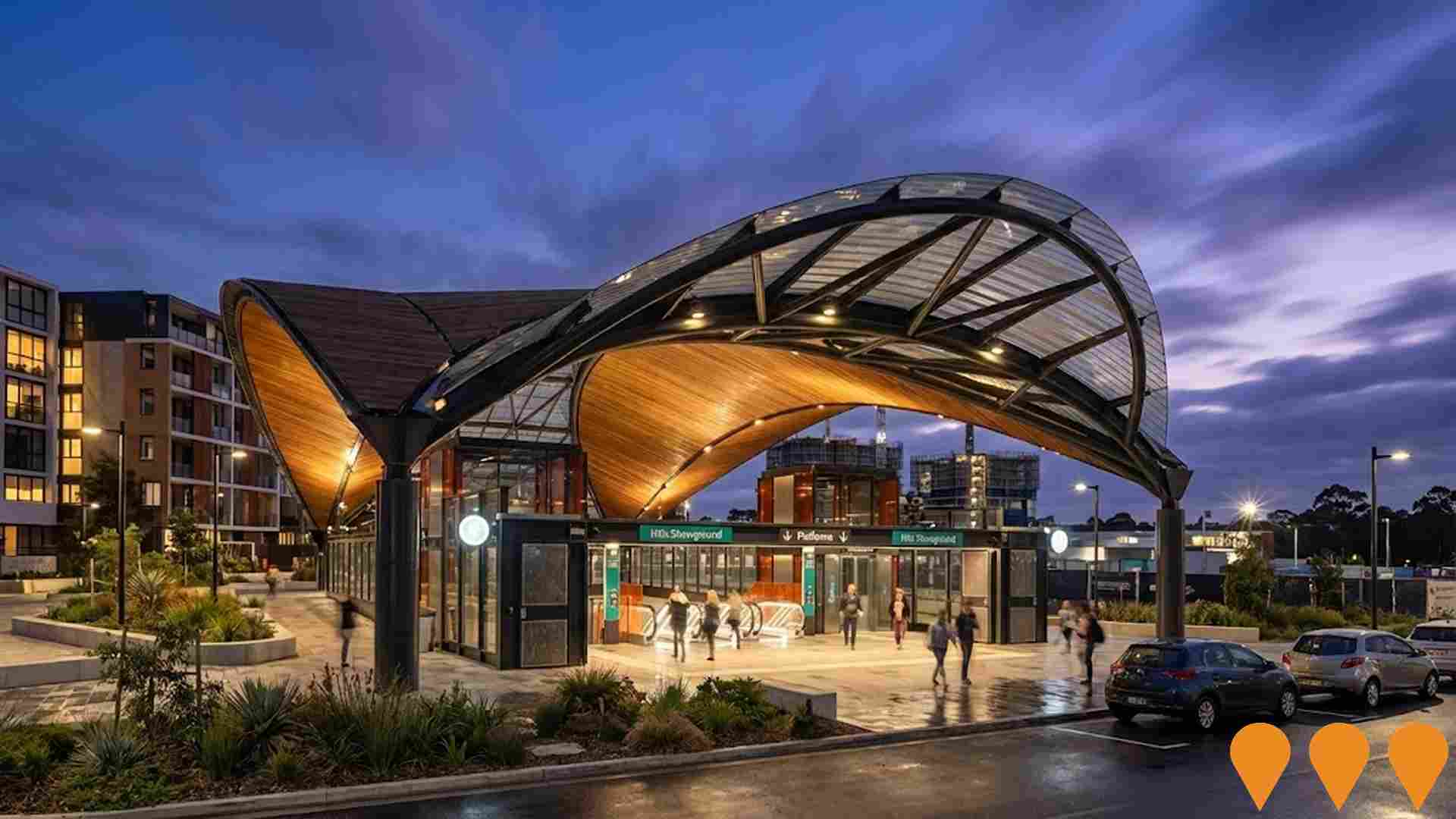
Castle Towers Expansion
Major $1+ billion expansion of Castle Towers creating NSW's largest shopping centre with over 500 stores, new dining and entertainment precincts, a fresh food market, premium cinema, integrated public transport hub, additional office space and two residential towers.

Castle Hill North Precinct Plan
The Castle Hill North Precinct Plan aims to deliver higher density residential development to support population growth in the Castle Hill area. The plan includes rezoning for residential and mixed-use developments, infrastructure upgrades such as road improvements, and enhanced public transport connectivity, including potential links to the Sydney Metro Northwest. The project seeks to create a vibrant, sustainable urban precinct with improved community facilities.

Bella Vista Gardens
Award winning aged care and seniors living community in Norwest/Kellyville featuring a 142 bed residential aged care home and 55 independent living units, with wellness facilities, hydrotherapy pool, hair and beauty salon, landscaped village green and views over Castle Hill Country Club golf course. :contentReference[oaicite:0]{index=0} :contentReference[oaicite:1]{index=1} :contentReference[oaicite:2]{index=2} :contentReference[oaicite:3]{index=3} :contentReference[oaicite:4]{index=4}

Dawes Avenue Residential Development
High-density residential development with 360 apartments (expanded from original 280 approval) including 48 affordable housing units. Located 550m from Showground Metro Station, comprises eight buildings ranging from 8-12 storeys with retail spaces, communal facilities and landscaped courtyards. Part of the broader Castle Hill Showground Precinct revitalization.
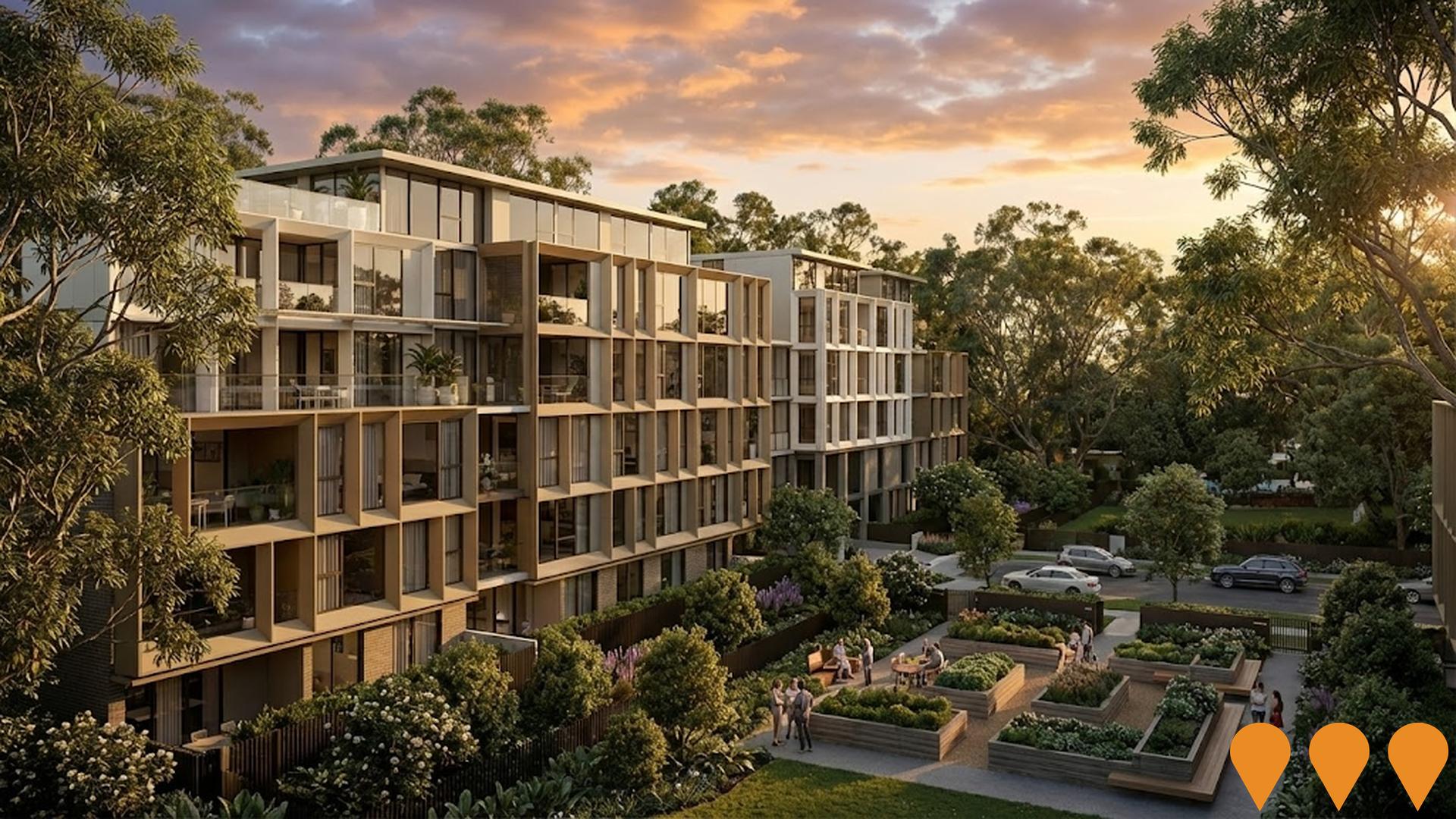
Castle Hill Station Precinct
Development opportunities around Castle Hill Metro Station situated beneath Arthur Whitling Park opposite Castle Towers Shopping Centre. Underground station 25 metres below ground level with integrated park reconstruction above. Part of Landcom's urban renewal program.
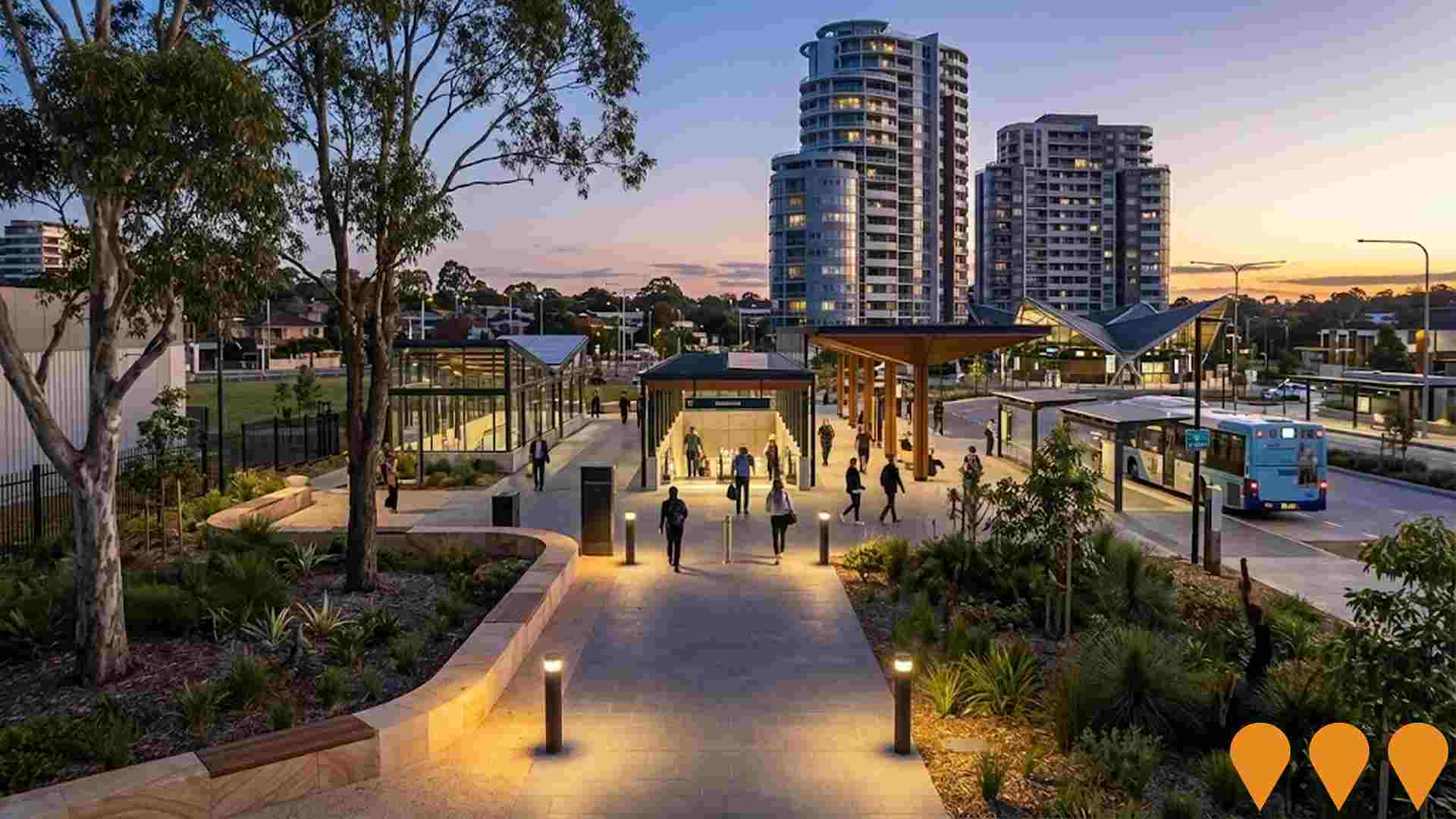
Isaac Towers
Mixed-use development featuring two towers (10-storey and 6-storey) connected by 3-storey glazed atrium. Includes 80-bed hotel, retail outlets, commercial office spaces, childcare facilities for 120 children, cafe, gym, and function centre. Located opposite Norwest Metro Station.

Employment
Castle Hill - West ranks among the top 25% of areas assessed nationally for overall employment performance
Castle Hill - West has a highly educated workforce with strong representation in professional services. Its unemployment rate was 2.7% as of June 2025, which is lower than Greater Sydney's rate of 4.2%.
The area experienced an estimated employment growth of 2.9% over the past year. As of June 2025, 3,117 residents were in work and the workforce participation rate was 67.6%, higher than Greater Sydney's 60.0%. Leading employment industries among residents include professional & technical, health care & social assistance, and education & training. The area shows particular strength in professional & technical services, with an employment share of 1.3 times the regional level.
However, transport, postal & warehousing is under-represented, with only 3.3% of Castle Hill - West's workforce compared to Greater Sydney's 5.3%. Employment opportunities locally may be limited as indicated by the count of Census working population vs resident population. Between June 2024 and June 2025, employment levels increased by 2.9% while labour force grew by 3.1%, causing the unemployment rate to rise by 0.2 percentage points in Castle Hill - West. In comparison, Greater Sydney recorded employment growth of 2.6%, labour force growth of 2.9%, with unemployment rising 0.3 percentage points during the same period. Jobs and Skills Australia's national employment forecasts from May 2025 suggest that national employment is projected to expand by 6.6% over five years and 13.7% over ten years. Applying these industry-specific projections to Castle Hill - West's employment mix, local growth is estimated at approximately 7.1% over five years and 14.4% over ten years.
Frequently Asked Questions - Employment
Income
The economic profile demonstrates exceptional strength, placing the area among the top 10% nationally based on comprehensive AreaSearch income analysis
AreaSearch's latest postcode level ATO data for financial year 2022 shows Castle Hill - West had a median income of $63,522 and an average income of $93,735 among taxpayers. Nationally, these figures are exceptionally high compared to Greater Sydney's median of $56,994 and average of $80,856. Based on Wage Price Index growth of 12.61% since financial year 2022, current estimates for Castle Hill - West would be approximately $71,532 (median) and $105,555 (average) as of September 2025. According to the 2021 Census, household incomes in Castle Hill - West rank exceptionally high at the 99th percentile ($3,361 weekly). Income analysis reveals that 39.4% of residents (2,045 people) fall into the $4000+ bracket, differing from the surrounding region where the $1,500 - 2,999 category predominates at 30.9%. A significant 57.0% earn above $3,000 weekly. After housing costs, residents retain 86.7% of their income, reflecting strong purchasing power. The area's SEIFA income ranking places it in the 10th decile.
Frequently Asked Questions - Income
Housing
Castle Hill - West is characterized by a predominantly suburban housing profile, with ownership patterns similar to the broader region
The dwelling structure in Castle Hill - West, as per the latest Census, consisted of 86.4% houses and 13.7% other dwellings (including semi-detached, apartments, 'other' dwellings). This compares to Sydney metropolitan areas at 78.2% houses and 21.8% other dwellings. Home ownership in Castle Hill - West was 35.6%, similar to the Sydney metro level, with mortgaged dwellings at 49.8% and rented ones at 14.6%. The median monthly mortgage repayment in the area was $3,000, aligning with the Sydney metro average, while the median weekly rent was $692, compared to Sydney metro's $3,000 and $580 respectively. Nationally, Castle Hill - West's mortgage repayments were significantly higher than the Australian average of $1,863, and rents were substantially above the national figure of $375.
Frequently Asked Questions - Housing
Household Composition
Castle Hill - West features high concentrations of family households, with a higher-than-average median household size
Family households constitute 90.7% of all households, consisting of couples with children (59.3%), couples without children (21.5%), and single parent families (8.8%). Non-family households comprise the remaining 9.3%, with lone person households at 8.9% and group households making up 0.9%. The median household size is 3.3 people, which is larger than the Greater Sydney average of 3.0.
Frequently Asked Questions - Households
Local Schools & Education
Educational achievement in Castle Hill - West places it within the top 10% nationally, reflecting strong academic performance and high qualification levels across the community
Educational attainment in Castle Hill-West is notably high, with 47.6% of residents aged 15 and above holding university qualifications compared to Australia's 30.4% and NSW's 32.2%. Bachelor degrees are the most common at 30.4%, followed by postgraduate qualifications (14.7%) and graduate diplomas (2.5%). Vocational pathways account for 22.6% of qualifications among those aged 15 and above, with advanced diplomas at 11.9% and certificates at 10.7%. Educational participation is high, with 31.6% of residents currently enrolled in formal education: 10.1% in secondary, 9.6% in primary, and 7.2% in tertiary education.
St Angela's Primary School serves Castle Hill-West, enrolling 605 students as of the latest data. The school focuses exclusively on primary education, with secondary options available nearby. School places per 100 residents (11.7) are below the regional average (17.4), suggesting some students may attend schools in adjacent areas.
Frequently Asked Questions - Education
Schools Detail
Nearby Services & Amenities
Transport
Transport servicing is high compared to other areas nationally based on assessment of service frequency, route connectivity and accessibility
Castle Hill - West has 21 active public transport stops operating, all of which are bus stops. These stops are served by a total of 62 different routes, facilitating 2,723 weekly passenger trips collectively. The area's transport accessibility is rated as excellent, with residents on average located 186 meters from the nearest transport stop.
On average, there are 389 trips per day across all routes, which equates to approximately 129 weekly trips per individual stop.
Frequently Asked Questions - Transport
Transport Stops Detail
Health
Castle Hill - West's residents boast exceedingly positive health performance metrics with very low prevalence of common health conditions across all age groups
Castle Hill - West demonstrates excellent health outcomes with low prevalence of common conditions across all ages. Private health cover stands at approximately 68%, higher than Greater Sydney's 63.7% and the national average of 55.3%. Asthma and arthritis are the most prevalent conditions, affecting 5.3% and 4.9% respectively.
A total of 78.7% report no medical ailments, compared to 75.9% in Greater Sydney. The area has 17.3% residents aged 65 and over (899 people), lower than Greater Sydney's 18.9%. Senior health outcomes align with the general population's profile.
Frequently Asked Questions - Health
Cultural Diversity
Castle Hill - West is among the most culturally diverse areas in the country based on AreaSearch assessment of a range of language and cultural background related metrics
Castle Hill-West has high cultural diversity, with 47.0% speaking a language other than English at home and 46.7% born overseas. Christianity is the predominant religion, comprising 53.4%. Hinduism is slightly overrepresented at 8.9%, compared to Greater Sydney's 8.6%.
The top three ancestry groups are Other (17.1%), Chinese (15.0%), and Australian (13.8%). Notably, Sri Lankan (2.0% vs regional 1.0%), Korean (2.4% vs 2.3%), and Indian (8.0% vs 7.5%) groups are overrepresented.
Frequently Asked Questions - Diversity
Age
Castle Hill - West's median age exceeds the national pattern
Castle Hill - West's median age is 41 years, which is significantly higher than Greater Sydney's average of 37 and somewhat older than Australia's median of 38. Compared to Greater Sydney, Castle Hill - West has a notably over-represented 55-64 cohort (13.8% locally) and an under-represented 25-34 age group (8.7%). According to the 2021 Census, the 75-84 age group grew from 3.4% to 5.7%, while the 65-74 cohort increased from 9.3% to 10.7%. Conversely, the 5-14 age group declined from 14.4% to 12.9% and the 45-54 group dropped from 16.3% to 15.2%. Demographic modeling suggests that Castle Hill - West's age profile will significantly change by 2041. The 75-84 cohort is projected to grow by 85%, adding 251 residents to reach 547. This growth will be driven entirely by residents aged 65 and older. Conversely, population declines are projected for the 0-4 and 55-64 age cohorts.



